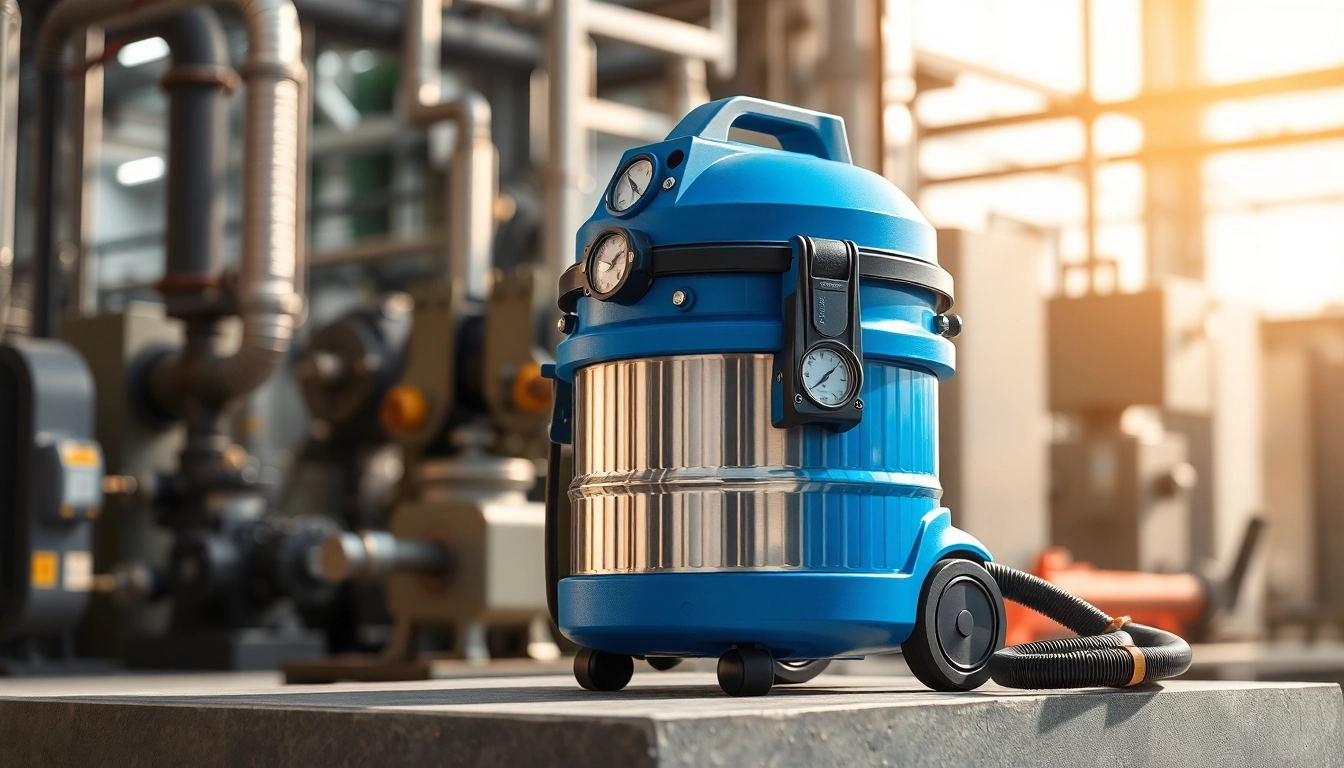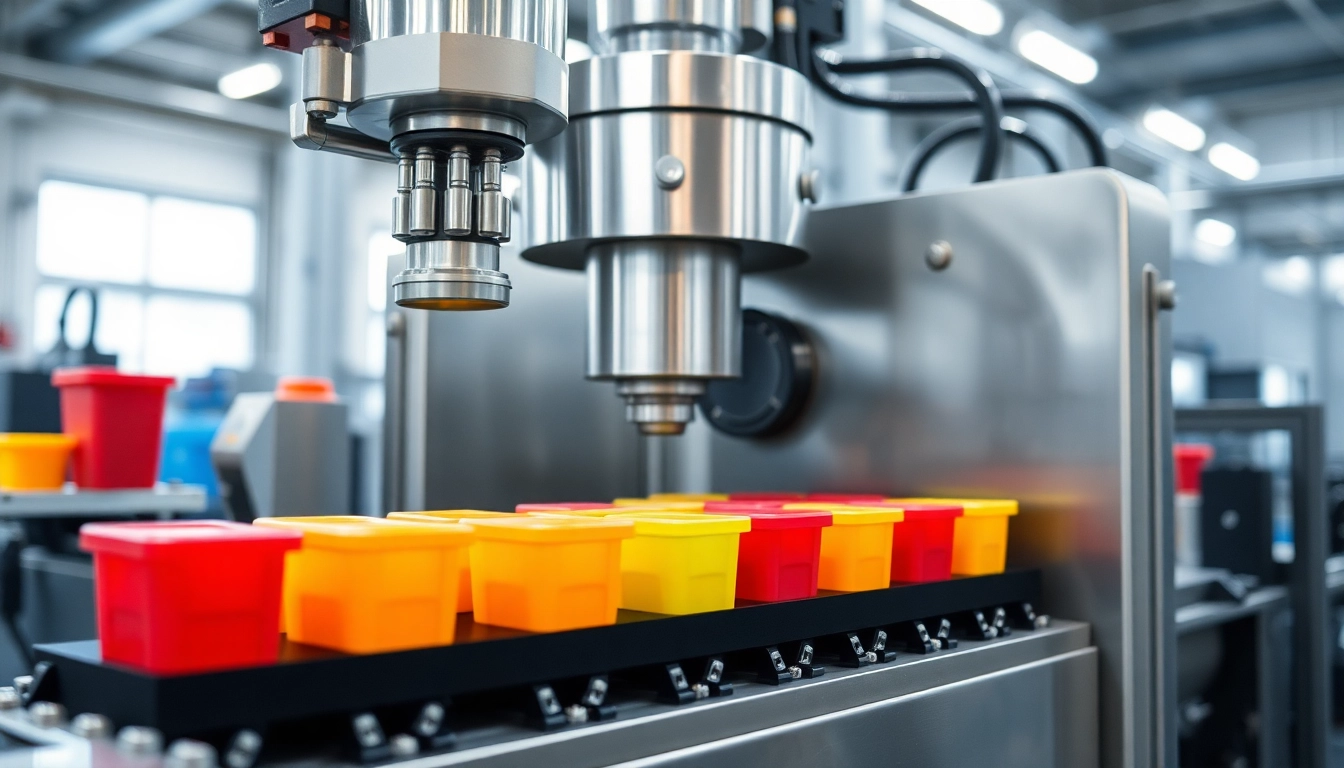What is a Vacuum Ejector?
Definition and Basic Functionality
A vacuum ejector, often known as an ejector or aspirator, is a type of pneumatic device primarily designed for generating a vacuum utilizing the principle of the Venturi effect. This ingenious mechanism creates a vacuum effect by using high-pressure air or steam which is channeled through a specially designed nozzle. When the high-velocity fluid passes through the narrow section of the ejector, it creates a drop in pressure that allows ambient air or gas to be sucked in, thus producing vacuum. The beauty of the vacuum ejector lies in its simplicity and efficiency, making it a preferred choice in many industrial applications.
To delve deeper into its functionality, we can refer to its various components and how they work in unison to generate vacuum effectively. Vacuum ejectors are pivotal in sectors requiring precise vacuuming solutions, including packaging, woodworking, and even in laboratories. For a deeper understanding of how these devices work, take a look at the Vacuum ejector technology.
Components and Structure of Vacuum Ejectors
At its core, a vacuum ejector consists of three main components: the nozzle, the suction chamber, and the exhaust chamber. The nozzle is the entry point where compressed air or steam enters the system, and its design is crucial for achieving the desired vacuum level. The suction chamber is where the low-pressure zone is created as the high-velocity air expands, allowing air or other gases to enter the chamber.
Finally, the exhaust chamber allows the expulsion of air after suction has occurred. These components work together seamlessly to ensure efficient vacuum generation. Additionally, various materials like stainless steel or durable plastics are often used in the manufacturing of vacuum ejectors to withstand different working environments.
The Working Principle: Venturi Effect Explained
The working principle of a vacuum ejector relies heavily on the Venturi effect, which states that when fluid flows through a constricted section of a pipe, its velocity increases, and its pressure decreases. This principle is what allows a vacuum ejector to produce suction. As air or steam travels through the nozzle — which narrows down — it accelerates, leading to reduced pressure in the suction chamber. This pressure differential is what creates the vacuum effect.
This principle not only applies to ejectors but is also foundational in various applications like carburetors and certain types of pumps. Understanding this fundamental concept is crucial for those looking to optimize vacuum systems in various industrial settings.
Types of Vacuum Ejectors
Single-stage vs. Multi-stage Vacuum Ejectors
Vacuum ejectors can be classified into single-stage and multi-stage types based on their construction and operation. A single-stage vacuum ejector is straightforward, functioning on a single nozzle and creating a vacuum with one passage of fluid. These are typically used for applications requiring moderate vacuum levels and are simpler in design and installation.
In contrast, multi-stage vacuum ejectors employ multiple nozzles, progressively increasing the vacuum level through subsequent stages of compression. These systems are particularly advantageous for applications requiring deeper vacuum levels, thus facilitating tasks that demand high precision, such as in certain laboratory experiments or industrial processes that deal with sensitive materials.
Common Applications of Vacuum Ejectors
Vacuum ejectors find diverse applications across various industries. In manufacturing, they play a vital role in material handling, allowing for the transport of loose materials like powders or granulates. In woodworking, vacuum ejectors assist in clamping workpieces securely during processing.
Additionally, vacuum ejectors are increasingly used in the food industry for packaging processes where product preservation is paramount, as removing air helps prolong shelf life. Laboratories utilize vacuum ejectors for tasks such as filtration and drying processes, where low pressure is crucial for accelerating evaporation and enhancing separation efficiency.
As industries continue to lean towards automation and precision, the relevance and application scope of vacuum ejectors are bound to expand further.
Comparison with Other Vacuum Technologies
When comparing vacuum ejectors with other vacuum technologies, such as mechanical pumps, advantages and limitations surface. Mechanical vacuum pumps typically provide a more consistent vacuum but require more maintenance and can involve higher operational costs due to electricity consumption and moving parts wear.
Conversely, vacuum ejectors are cost-effective, can utilize existing compressed air systems, and boast lower maintenance requirements, as they have fewer moving parts. However, they may not achieve the depths of vacuum that some mechanical systems can, making the choice between the two heavily dependent on specific application requirements.
Advantages of Using a Vacuum Ejector
Efficiency and Cost-effectiveness
The efficiency of vacuum ejectors stems from their design simplicity and the ability to harness existing compressed air systems to create suction. This operational efficiency translates into cost-effectiveness, reducing energy consumption compared to traditional vacuum systems that rely on electric motors and have complex mechanical components.
Furthermore, as they require minimal maintenance, facilities can save on both direct and indirect costs associated with upkeep. This makes vacuum ejectors a smart choice for businesses looking to optimize their operational efficiency without sacrificing performance.
Maintenance and Operational Benefits
One of the standout advantages of vacuum ejectors is their low maintenance requirements. With fewer moving parts, vacuum ejectors tend to have longer lifespans and can operate in a variety of environmental conditions without significant wear and tear. Regular maintenance typically involves monitoring the air supply and cleaning filters periodically to ensure consistent performance.
These operational benefits contribute to the overall stability and reliability of processes in which vacuum ejectors are employed. As a result, businesses experience less downtime, further enhancing productivity and profitability.
Environmental Impact Considerations
In today’s environmentally conscious world, the vacuum ejector stands out for being a more sustainable option compared to traditional vacuum pumps. By utilizing compressed air, they often consume less energy and minimize reliance on electricity generated from fossil fuels.
Additionally, since they operate on straightforward principles without the need for oils or lubricants, vacuum ejectors contribute less to pollution and waste. Organizations striving to meet sustainability goals can benefit from integrating vacuum ejector technology into their systems.
How to Properly Use a Vacuum Ejector
Installation Guidelines
The installation of a vacuum ejector requires careful consideration of various factors to ensure optimal performance. First, it is essential to select a location that allows for easy access to the compressed air supply line and provides sufficient space for the ejector and any connected piping. Correct mounting is critical; follow manufacturer instructions to ensure secure attachment and minimal vibration.
Furthermore, configure exhaust outlets to prevent back pressure that could compromise suction performance. Regularly check connections and seals to prevent leaks, as these can significantly affect vacuum efficiency.
Optimal Operating Conditions
To maximize the performance of a vacuum ejector, it is crucial to operate under optimal conditions. Ensure that the compressed air supply meets the required pressure specifications outlined by the manufacturer. Adjusting air pressure to be higher than the minimum ensures a robust vacuum is established.
Additionally, monitor the temperature and humidity levels in the surrounding environment, as extreme conditions can affect air density and, consequently, the ejector’s performance. Adhering to these operational guidelines will enhance efficiency and longevity.
Common Issues and Troubleshooting Tips
Despite their reliability, vacuum ejectors can face challenges that may hinder performance. Common issues include reduced suction power, which can be attributed to air leaks, insufficient compressed air supply, or blockages in the ejector system. To troubleshoot, inspect all connections and seals for integrity and verify that the air supply pressure remains consistent.
Regular maintenance checks can proactively mitigate many of these issues, ensuring that vacuum ejectors operate smoothly over extended periods. In cases of persistent problems, consulting manufacturer resources or professional technicians can provide specialized insights into further diagnostics.
Future Trends in Vacuum Ejector Technology
Innovations in Design and Efficiency
The future of vacuum ejector technology promises exciting innovations aimed at improving efficiency and expanding application ranges. Advances in material science may lead to lighter, more durable ejector components, enhancing their efficacy in high-demand environments. Additionally, smart technology integration, such as IoT-enabled sensors, can facilitate real-time monitoring of vacuum levels and system performance, paving the way for more automated workflows.
This innovation trend aligns with the global push for Industry 4.0 and smart manufacturing, where integrating technology can optimize processes and reduce waste.
Impact of Automation on Vacuum Systems
Automation is revolutionizing how vacuum systems operate, with smart ejectors gradually becoming a reality. Advanced controls allow for precise management of vacuum levels, which enhances efficiency and minimizes energy consumption. Moreover, automated systems can predict maintenance needs and provide data to operators, reducing downtime and improving overall system reliability.
As industries increasingly opt for automated solutions, vacuum ejectors will evolve into integral elements of autonomous systems, capable of self-optimizing based on live operational data.
Market Outlook and Industry Predictions
Looking ahead, the market for vacuum ejectors is expected to grow, driven by the ongoing demand for efficient and cost-effective vacuum solutions across various sectors. Industries like food packaging, healthcare, and electronics manufacturing are projected to adopt more vacuum ejector technology as businesses aim to enhance their sustainability efforts and improve operational efficiencies.
Moreover, as small and medium-sized enterprises recognize the applicability of vacuum ejectors in their operations, a broader market penetration can be expected. Overall, as technology continues to advance, the future looks promising for vacuum ejectors and their adoption across multiple sectors.



